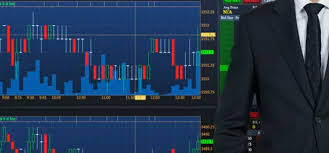CFD trading is an increasingly popular form of investing, especially among experienced investors who are looking to take advantage of price movements in the market. But what is CFD trading? In this article, we’ll explain exactly what it is, how it works, and why it can be a lucrative investment strategy.
What is CFD Trading?
CFD stands for “contract for difference”, which refers to a type of financial agreement between two parties. With CFDs, traders speculate on the future value of an underlying asset such as a stock, commodity or currency pair. When you enter into a contract with another party, you agree to exchange the difference in the price of the asset at the time the contract is entered into and when it expires. The difference between these prices will determine whether you make or lose money on your investment.
For example, if you enter into a CFD contract with another investor to buy 100 shares of ABC Company at $50 per share today (the spot price), but think that the price will increase in one month’s time, then when the contract expires one month from now if ABC Company has increased in value to $55 per share then you would have made a profit on that transaction. Likewise if the stock had dropped in value to $45 per share then you would have lost money on that transaction.
How Does cfd trading Work?
CFDs are traded over-the-counter (OTC) meaning they are not exchanged on any traditional exchange like stocks or bonds; instead they are traded directly between two parties. This means that there is no central marketplace or clearing house like there is with some other types of investments and trades such as stocks or bonds; instead all trades are conducted directly between two parties without any intermediaries involved. This also means that traders must be aware of any potential counterparty risk associated with trading CFDs as there is no centralized authority overseeing these transactions.
Another important aspect of trading CFDs is leverage; when trading many investors use leverage which essentially allows them to increase their potential returns by borrowing funds from their broker or other institution and using those funds to increase their position size in any given trade. Leverage can be incredibly risky however and should only be used by experienced traders who understand both its benefits and dangers before entering into any leveraged positions. By understanding risk management techniques such as stop-loss orders and position sizing strategies, traders can limit their downside risk while potentially increasing their upside potential when trading with leverage.
CFDs offer investors an alternate way to invest in different markets without having outright ownership of an underlying asset; this can be useful for both experienced and beginner traders alike looking for additional exposure to different markets without taking on too much risk at once. When used responsibly however, leverage can help traders potentially increase their returns while limiting their downside exposure; understanding how leverage works as well as other risk management strategies can help ensure success when trading CFDs in any market environment.



